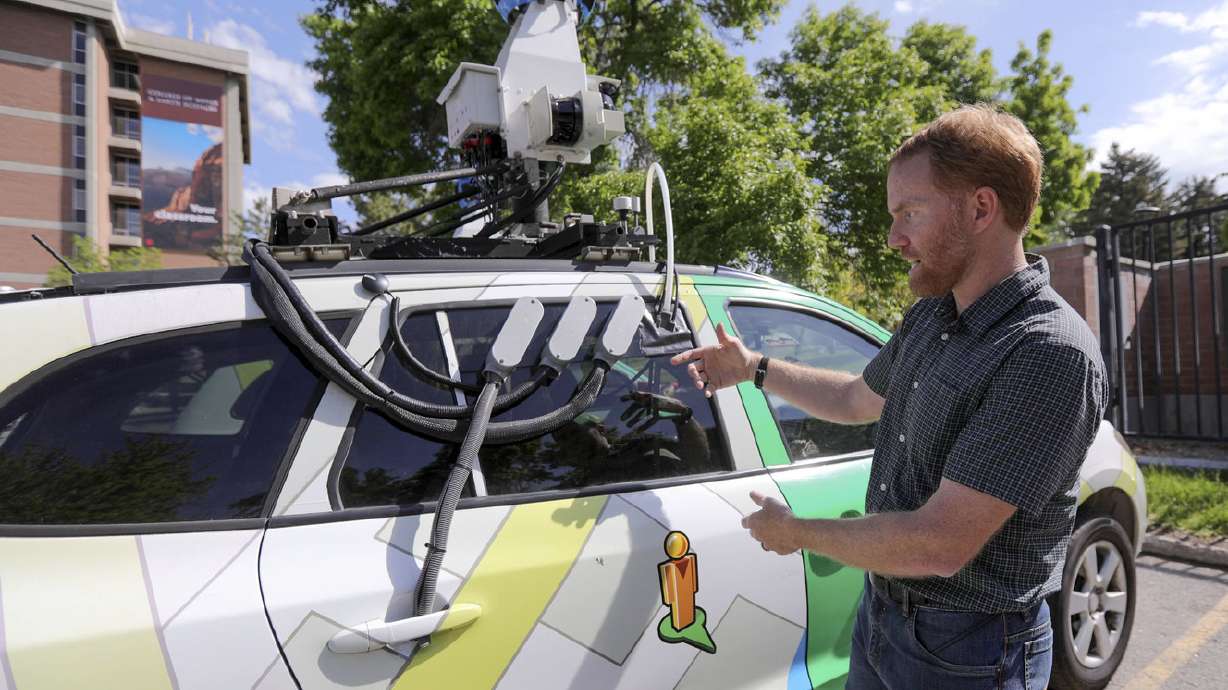Estimated read time: 3-4 minutes
This archived news story is available only for your personal, non-commercial use. Information in the story may be outdated or superseded by additional information. Reading or replaying the story in its archived form does not constitute a republication of the story.
SALT LAKE CITY — Salt Lake City has a new tool for measuring air quality.
Cars.
Cars owned by Google and specially equipped with air quality sensors have begun collecting pollution data, which University of Utah scientists will use to pinpoint where exactly emissions are coming from. The specialty cars, which are primarily used to take photos for the Street View function on Google Maps, were rolled out in April and will be on the road until the end of the year.
The initiative, launched through a partnership between Google Earth Outreach and the Environmental Defense Fund, is similar to the TRAX-based air quality monitoring system introduced in 2014. But cars have the freedom to cover more ground than the light rail system does — meaning they can provide more detailed data about how air quality fluctuates from block to block.
"Salt Lake, right now with this, is probably one of the best measured cities in the world for air quality," said John Lin, an associate professor in the Department of Atmospheric Sciences at the University of Utah and one of the leading researchers on the study.
Salt Lake City isn't the first city to use Google Street View cars to measure its street-level air pollution, but it is one of the first. A similar project launched in Oakland, California, in 2015, and two other cities, Houston and London, have joined Oakland since then. In Oakland, researchers found that pollution levels varied from street to street based on factors such as traffic, industrial emissions and cooking.
The Environmental Defense Fund began looking into Salt Lake City as a potential location for the car-based system in part because of the air quality measuring experience of Lin and his team, according to Ramon Alvarez, the fund's associate chief scientist.

"They've been doing some really interesting work on measurements using the light rail platform," Alvarez said. "The question was, what do air quality patterns look like in the rest of the city?"
The Google Street View cars will drive repeatedly through 26 Salt Lake neighborhoods, spanning from the industrial areas north of the city down to residential sections of Cottonwood Heights and West Jordan, with the sensors measuring air quality roughly every 30 to 60 meters. They'll be on the road eight hours a day, five days per week, and may drive down the same street as many as 40 times.
The project is currently slated to wrap up at the end of 2019, but Lin said he hopes it will extend into 2020.

While researchers expect the cars to fill in data gaps in the TRAX measuring initiative, there are some limitations to the car-based system. It relies on Google Street View drivers, who aren't able to be on the road 24 hours a day. The cars, unlike the electric light rail trains, are also powered by gasoline, meaning they produce some emissions of their own.
With the TRAX sensor system in place, University of Utah researchers already had the technology to digest and interpret the data the cars will provide. And, if efforts in recent years to measure and address air pollution in Salt Lake City are an indication of growing concern, Lin said he believes the study's results will be of interest to policymakers and the public.
"It's a combination of opportunities and the problem" that makes Utah a good place for the study, Lin said. "Air quality is on top of a lot of people's minds."









